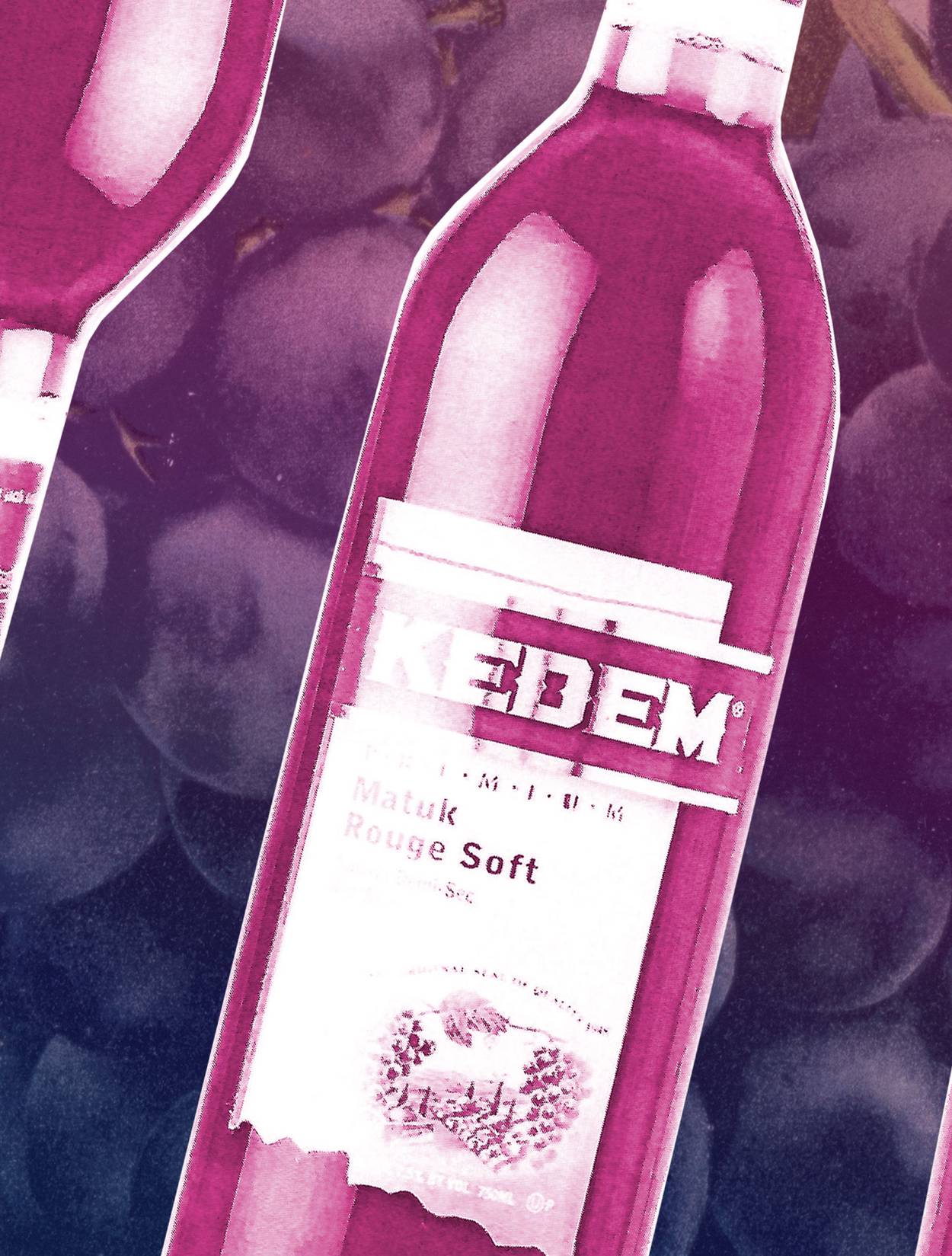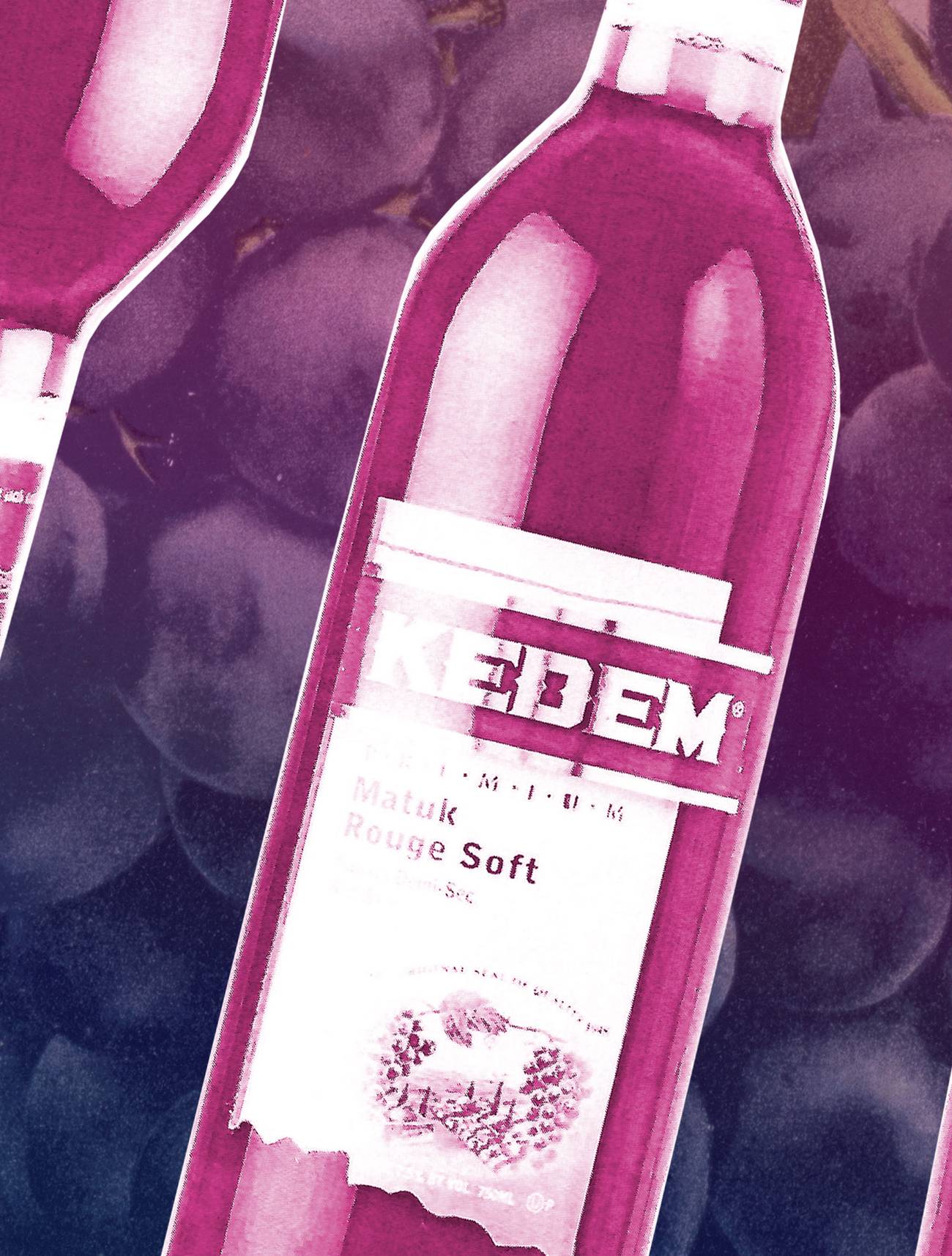A Wine for Mom
Do we ever outgrow our desire for a parent’s understanding and approval?




Like many of her generation, my mother, Ethel, born in 1924, never outgrew her taste for clichéd kosher wines. Was it just her madeleine or that she didn’t know better? Manischewitz or Carmel or Schapiro’s, it didn’t matter which one, all those sweet koshers tasted like liquefied grape jelly, and I’m not sure it was ever made from a fresh grape instead of concentrate. Whatever. Ever since I was in diapers, I drank them every Friday night, Saturday afternoon, and holidays. Of course, at the beginning, my parents mixed my tipple with seltzer. By the time I was seven or so, full strength. That stuff was mother’s milk to me, I confess. There was a time when I, too, loved it.
Years later, I found another wine world, made from organic agriculture and one ingredient, grape. So different than the conventional wines that were made to a market with all the technology available to the industry. These natural ones were the only ones worth my liver. This was not about ideology over aesthetic; they taste better, the way a fresh-picked heirloom tomato tastes more complex than anything you can get in a package in the supermarket. Through sipping, those delicious wines also told stories of the people and year that made them. To me, these were way more kosher than anything with a certification. Because, except for one impossible-to-find kosher wine from Australia (Harkham), kosher and natural rarely existed. Depending on how you count, there are seventy-two perfectly legal wine additives (available in kosher, of course), and for the sweet wine my mother drank? Were those made from grape concentrate instead of real fruit? Most likely. Yet even the top Catholic brass, Pope Francis, agreed with me when he declared that only wines without additives were holy enough for the Eucharist. So why not for my fellow Jews?
This was one of my first-world problems. I couldn’t drink the old slop or what passed for modern kosher wines. What was I going to do while sharing a holiday with my mother when drinking was required not only for my mental health but for custom, like at Passover? Which led to the fifth question of the Passover celebration: Why on that night was I unable to find any natural kosher wines?
Ethel—who chose religion over just about everything else, never lost her thrill for going to temple, dressing in a smart suit with a favorite diamond bug pin on her lapel (“Have to advertise,” she’d say), sitting in the women’s section—could never quite grasp my desperation to find something palatable to drink. My desire to have a glass with a meal was almost unseemly to her. “There’s a big jug of Matuk in the fridge, and it’s delicious,” she’d say, unable to believe this obsessed redhead was really her daughter. Invariably for holidays, I’d plunk down way too much money, hopes high, expectations low, ferrying the rabbi-approved bottles over to Mom’s apartment in Long Beach, where, as the family shrank and shriveled, we celebrated, if you could call it that, at a table for two. To her credit, she’d always taste, yet would say, “You know what this needs?” then she’d mix some of her favorite, Matuk Rouge Soft, with the thirty-five-dollar (kosher) Burgundy I’d brought, and then she’d nod. “That’s better.” Which really didn’t matter because that Burgundy sucked anyway.
That’s why one year I got it into my head to make my own: traditional, kosher, and natural. Of course, I couldn’t make it. As an apikores, nonbeliever, I couldn’t touch the grapes, tread, or punch them down. I was, however, allowed to look at them. You see, kosher wine doesn’t mean it was blessed by a rabbi, it means that it was made by a Shabbos-observing Jew. And if it didn’t go through the draconic process of being flash-pasteurized, only an observant Jew could open the bottle and serve it to another observant Jew. Ironically, my mother, who doesn’t even turn on a light between Friday sunset and Saturday sundown, could be a kosher winemaker and sommelier. Me? Not a chance. However, I could be my own consultant and find a Sabbath observer to do the physical handling. I felt I had to do it, not just for my own pleasure but for my people who didn’t have a clue what real wine was like.
I set out to make my wine in the country of Georgia. I loved the wines. I knew I could get affordable grapes and had friends to help out, even a Sabbath-observing one. All I had to do was figure out how to pay for the kosher certification, which could be as much as ten thousand dollars, and deal with the bureaucracy, like finding the rabbi to give certification. It wasn’t easy to reach the man in Tbilisi. The rabbi was always rushing out to Kutaisi for a bris or to Baghdati for a wedding. Finally, I trapped him over Skype. After the Jew-splaining treatise on the religious laws and why I, now a secular Jewish natural-wine lover, would never make my wine, we were disconnected. I called back. Friends in Tbilisi tried to reach him. The harvest came and went. It was clear that I wasn’t going to be making kosher wine that vintage, but I had made up my mind: I wasn’t going to endure bad wine for the holiday any longer.
On the occasion of the second Passover of the pandemic, I’d had enough suffering. I had long ago become a full adult, and it was time for my own liberation. I headed to Discovery Wines and tried to find the wine that would serve me with pleasure on the night when you were supposed to drink four cups. There on the shelf, it called out to me. Bénédict and Stéphane Tissot’s Singulier.
The Tissots are an hour’s drive west from Burgundy or a forty-five-minute ride from Dijon. I loved the wines from that region, and when I first visited, I knew why: The place itself was soothing. Rolling hills and Irish-like greenery, cows marching through the vines with their bells donging, as if telling me to slow down and park all anxieties. I’m a sucker for morel mushrooms, which are plentiful here, likewise Comté cheese. But the Jura also has a spirit of rebellion, an independent streak, and was a sweet spot for the resistance fighters in World War II. There was peace and sparkling air, and the wines had an originality, a lack of cynicism, and a lack of commercialism. Physically, it’s the mirror image of Burgundy, but the wines are fresher. Their most famous wine, and most expensive, is Vin Jaune, a wine made like an unfortified sherry—meaning it develops a yeast veil called “flor” that protects the wine as it loses its fruit and intensifies over the years until it’s bottled. It can be sublime and tastes like an unsweet salted caramel. There are other versions of wine made from the same grape, savagnin (often mistaken for sauvignon), and can be made in the same salty style, but when not aged for a shorter time, it tastes like a boat ride out in the ocean spray. Chardonnay drinkers? This might be the place for my favorite expressions where the wine feels like silvery water. Nothing buttery here. The Jura also grows brilliant pinot noir, but its special power is in the other red grapes, the ethereal poulsard and the grippier trousseau. Compared to Burgundy, all of their reds are light in weight. Each one has a different poem to parse. The Singulier. Forty bucks. I hesitated. That was more than I usually spent on my singular drinking pleasure. Damn it, I thought, I’m worth it.
I had made up my mind: I wasn’t going to endure bad wine for the holiday any longer.
Back at home, I took out a favorite calligraphy marker, sat down at my kitchen table, and got to work. Like a tattoo artist, I found my spot. On the Tissot label, I carefully drew a U inside of an O, with a KP alongside, the symbol for “Union of Orthodox Rabbis, Kosher for Passover.” It was official. With the help of a little forgery, I’d made my first kosher wine.
It’s not that I was trying to hoodwink my mother—it’s not like I was bringing a loaf of rye into a house that was a matzo zone or tricking her to eat traif shrimp while telling her it was flounder. She tasted my unkosher wines every other time of the year, but somehow on Passover, she looked for that “Kosher for Passover” mark on everything, including instant coffee. That wine was as kosher (and as kosher for Passover) as eating an apple from the tree. I’d had it with the sixteenth-century rabbis who argued in and wrote the Talmud’s problematic interpretation of what kosher wine was. My wine was kosher in spirit and in ingredient. On top of it, my handiwork looked damned good.
That night at our seder for two, the candles lit and the Haggadahs out, I poured the first glass into my grandfather’s silver cup. That was absolutely the most gorgeous kosher wine I ever had. I was enjoying the seder, not counting the hours until it was over and we could sing “Chad Gadya.”
“Taste?” I asked Ethel as she was watching my rapture with laughter. She raised an eyebrow and picked the bottle up, not even looking for the kosher symbol.
Do we ever outgrow our desire for a parent’s understanding and approval? Even if we have another decade left, my mother will never quite accept my rejection of religion. But if she understood why I’ve devoted decades to writing about this magical, enduring symbol of life, culture, and humanity without shaking her head and saying, “Give it up already,” that would suit me even better.
Mom was fragile that year. COVID had pitted her memory and fueled her anxiety reactions. Yet as she poured some wine gamely into her own silver goblet, she crinkled her nose. “Not bad,” she said, and my heart perked up. Maybe she would understand. But then she picked up the Matuk Rouge Soft (naturally sweetened, of course) and blended it with Tissot’s trousseau. She was satisfied. “Taste it,” she insisted, pushing the goblet in my direction.
Excerpted from To Fall in Love, Drink This: A Wine Writer’s Memoir by Alice Feiring. Copyright © 2022 by Alice Sari Feiring. Reprinted with the permission of Scribner, a Division of Simon & Schuster, Inc.
Alice Feiring is an award-winning journalist, author, and essayist living in New York City. She publishes the authoritative natural wine newsletter The Feiring Line.